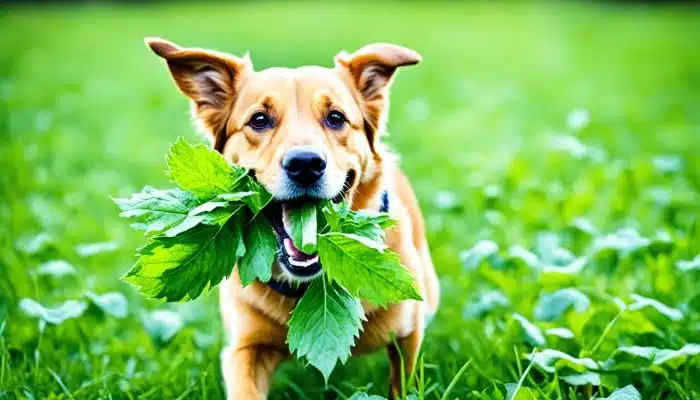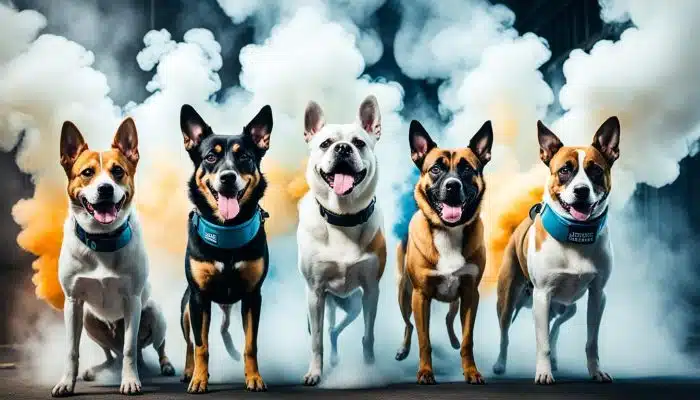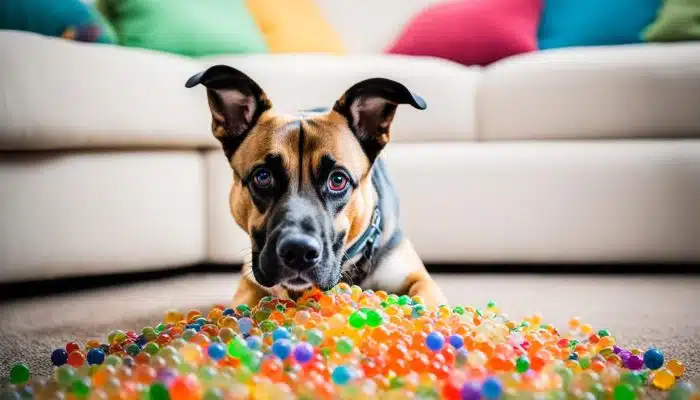
Are you looking for a relaxing way to spend your free time? Coloring golden retrievers can be the perfect activity for you. But where to begin? In this article, I will share some valuable tips and techniques for coloring golden retriever images. Whether you are a beginner or an experienced artist, these tips will help you bring your golden retriever coloring pages to life.
Key Takeaways
- Select the right reference image to give your artwork an authentic feel.
- Choose colors that match the golden retriever’s unique fur, eye, and nose features.
- Adding fur texture enhances the realistic feel of your coloring pages.
- Details such as the eyes and nose add soulfulness to your artwork.
- Backgrounds and finishing touches give your artwork a timeless quality.
Finding the Right Reference Image
When it comes to coloring golden retriever images, finding the right reference image is crucial. You want to make sure that the image you choose captures the unique characteristics of this lovable breed. Here are some tips:
- Search for high-quality golden retriever coloring pages: Look online for websites that offer free golden retriever coloring pages. Choose pages that have clear, crisp lines and details to make coloring easier.
- Consider purchasing a golden retriever coloring book: If you want a more extensive collection of images to choose from, consider purchasing a golden retriever coloring book. You can find many options available on websites like Amazon or at your local bookstore.
- Use photographs: If you prefer using photographs as your reference image, make sure they are high-quality and have a clear view of the golden retriever’s face and body.
The golden retriever coloring pages or photographs you choose should have various poses and expressions, allowing you to select the perfect image to match your desired coloring project.
By taking the time to find the right reference image, you’ll be able to create beautiful and realistic golden retriever coloring pages that capture the essence of this beloved breed.
Choosing the Perfect Colors

The right choice of colors can make all the difference in bringing your golden retriever coloring pages to life. It’s important to use colors that match the fur, eyes, and other unique features of this lovable breed.
Start with the fur. Golden retrievers have a range of shades, from light cream to deep golden, so choose colors accordingly. Use shades of yellow, orange, and brown to create a realistic representation of their soft, fluffy fur. For areas with more shadows or depth, consider using darker shades.
When working with the eyes, consider the breed’s signature trait: their intelligent and soulful gaze. Use shades of blue, green, and brown to bring the eyes to life. If you’re not sure which colors to use, look for a high-quality reference image to guide you.
Don’t forget about the nose! Golden retrievers have a black or dark brown nose, so use those colors to create a realistic representation.
Whether you’re using a golden retriever coloring book, printable coloring pages, or creating your own drawing, these tips will help you choose the perfect colors to capture the essence of this beautiful breed.
Golden Retriever Fur Color Chart
| Fur Color | Color Suggestion |
|---|---|
| Cream | #FEE0C1 |
| Golden | #FFD700 |
| Light Golden | #FDB813 |
| Dark Golden | #C79B00 |
| Red | #C20001 |
| Chocolate | #593F21 |
Note: These are suggestions and can be adjusted based on your preference or reference image.
Nailing the Fur Texture
When coloring a golden retriever, nailing the fur texture is essential to bring your artwork to life. There are various techniques to achieve realistic fur texture, ranging from smooth and silky to fluffy and wavy. Here are some tips to help you add depth and dimension to your coloring pages:
- Layering: Layering colors is an effective technique to mimic the texture and shading of the golden retriever’s fur. Start by using lighter shades to fill in the base color, then add darker shades for shading and depth.
- Hatching and cross-hatching: Hatching and cross-hatching involve using short, quick strokes to create the illusion of fur texture. Use a pen or pencil to apply light strokes along the direction of fur growth, then repeat with darker shades to add depth and shading.
- Blending: Use a blending tool to softly blend different shades of colors for a natural, fur-like texture. Start with a base color, then add darker shades for depth and lighter shades for highlights.
- Texture-specific brushes: Consider using texture-specific brushes, such as fur and hair brushes, to add a natural texture to your artwork. These can be found online or in art supply stores.
Remember, each golden retriever has a unique fur texture, so feel free to experiment and find the techniques that work best for your coloring project and style.
Mastering Eye and Nose Details

When it comes to coloring golden retriever pictures, the eyes and nose are the key features that capture their personality and heart. Therefore, it’s essential to add realistic details to enhance their expression and bring them to life. Here are some techniques that will help you master this important aspect of golden retriever coloring:
- Observe carefully: Look closely at reference images or photographs to get a sense of the golden retriever’s unique eye and nose characteristics; this will help you add accurate details to your coloring page.
- Understand the anatomy: Learn about the golden retriever’s eye and nose anatomy so that you can color them realistically. For example, a golden retriever’s eyes are often almond-shaped with dark pupils, while their noses can vary from light pink to dark brown, depending on their fur color.
- Bold Colors: Use bold, vibrant colors to capture the life and energy in their eyes. Use darker shades to create depth in the eyes or nose.
- Shading: For a more sophisticated look, add a subtle gradient or shade around the eyes and nose. This highlights their features without making them too prominent.
- Highlight: A small, bright highlight on their eyes makes their eyes look more realistic and adds glow to your work.
By utilizing these techniques, you can elevate the details in your golden retriever coloring pictures and truly capture their loving spirit.
Adding Background and Finishing Touches
Now that you’ve colored your adorable golden retriever, it’s time to add a background that complements its fur and personality. The background could be a park, a beach, or anything that makes your artwork stand out. Let your imagination run wild and think about what your furry friend would love to see around them.
If you’re not confident in your freehand skills, try tracing your golden retriever onto tracing paper, then adding your background on a separate sheet. Once done, overlay the two layers and trace the final image onto a clean sheet of paper. This will give you an impressive and seamless picture to work with.
In addition to the background, you can add some finishing touches to your artwork to make it unique. You can draw or color a collar on your golden retriever or add a thought bubble with a message. You can also experiment with different shading techniques to make your artwork more realistic.
Remember, the ultimate goal is to create a coloring page that captures the endearing nature of golden retrievers and gives joy to all those who see it. Have fun, be creative, and embrace your inner artist!
Conclusion
In conclusion, coloring golden retriever images can be a rewarding and enjoyable activity for people of all ages. With these tips and techniques, creating realistic and beautiful golden retriever coloring pages is within your reach. Remember to find the right reference image, choose the perfect colors, master the fur texture, eye and nose details, and add backgrounds and finishing touches.
Not only is coloring a relaxing and stress-relieving activity, but it also allows you to explore your creativity and improve your focus and concentration. And with the popularity of printable golden retriever coloring pages and coloring books, you can easily find new designs to color and share with others.
I hope these tips have inspired you to start your coloring journey or enhance your existing skills. Let your imagination run wild and unleash your inner artist. Happy coloring!
FAQ
How can I find high-quality golden retriever coloring pages or photographs?
There are several online platforms where you can find downloadable golden retriever coloring pages, such as coloring book websites, pet-related forums, or even social media groups dedicated to golden retrievers. You can also search for professional photography websites that offer high-resolution golden retriever photographs that you can use as a reference.
What are some tips for choosing the perfect colors for my golden retriever coloring pages?
When choosing colors for your golden retriever coloring pages, it’s important to consider the breed’s distinctive features. Golden retrievers typically have a golden or cream-colored coat, with variations in shades and highlights. Use warm tones such as yellows, oranges, and browns to capture the essence of their fur. You can also enhance the realism by adding darker shades for shadows and highlights to add depth to the image.
How can I create a realistic fur texture when coloring a golden retriever?
To achieve a realistic fur texture, start by using light strokes or small dots to mimic the fur strands. Gradually build up layers of color, adding depth and dimension. Experiment with different shading techniques, such as cross-hatching or stippling, to create the desired effect. Remember to observe reference images and study the direction of the fur for a more accurate representation.
What techniques can I use to color realistic eyes and noses in my golden retriever coloring pictures?
To color realistic eyes, start by creating a base color for the iris, using shades of brown or amber for golden retrievers. Add a darker shade around the edges to create depth. Use a small dot of white or a lighter color for the reflection. For the nose, use shades of black, gray, or brown to imitate the texture and highlights. Add subtle shadows to bring dimension to the nose. Remember to observe reference images closely to replicate the unique features of golden retrievers’ eyes and noses.
How can I add a background and finishing touches to my golden retriever coloring pages?
When adding a background, choose a color or scenery that complements the golden retriever. You can use colors commonly seen in nature, such as greens for grass or blues for the sky. Experiment with different techniques, such as blending, gradients, or adding textures to enhance the overall composition. Finally, add finishing touches by highlighting specific details, adding highlights or whiskers, and ensuring a balanced composition.




